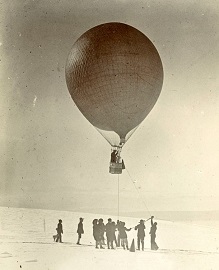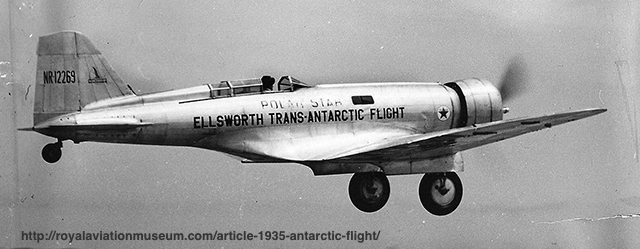The earliest explorers of Antarctica arrived in sailing/steam ships and once on the snow and ice used dogs, ponies and even man-hauling (men pulling sleds) using skis or on foot to transport their supplies across the ice.
The Heroic Age of Antarctic exploration was known for these early technologies but Antarctic adventurers were also often at the cutting edge of using the latest transport technology if it would achieve their aims.
This is why Robert Falcon Scott brought the first balloon to Antarctica and achieved the first flight on the Antarctic continent in 1902. His achievement was followed almost 2 months later by the men of the German Gauss Expedition who also used a balloon.

Shackleton brought the first car to Antarctica on his Nimrod expedition (1907-1909), although it didn’t prove as useful as he had hoped although it had some small success when it was operating properly in moving supplies.

Douglas Mawson seeing great potential for the use of aircraft in Antarctica took small, single-engine Vickers REP Monoplane on his 1911 Australasian Antarctic Expedition (AAE).
Unfortunately the aircraft was damaged on a demonstration flight before they left and his plans to use it for reconnaissance at Commonwealth Bay fell through. It did serve as a land tractor though and helped move supplies.
In 1928, Australian aviator and legendary explorer Hubert Wilkins was the first to fly over the Antarctic continent at Graham Land in a Lockhead Vega 1 monoplane. Privately sponsored by wealthy American businessman, William Randolph Hearst, it was the first time that an aircraft had mapped uncharted land.
Mawson returned to Antarctica with a gypsy moth float plane on his BANZARE expedition (1928-31) to take extensive aerial surveys of what would become the Australian Antarctic Territory.
1939 saw the arrival of the massive Snow Cruiser that was supposed to serve as a mobile lab, crew quarters and exploration vehicle but was too huge, heavy and underpowered to achieve much although it seemed to run more successfully in reverse than with forward gears.

In the International geophysical year (IGY) in 1957-58, Bunny Fuchs crossed Antarctica in Sno-cats from the Weddel Sea to the Ross Ice Shelf. Sir Edmund Hillary assisted him by laying depots for the second half of the journey using modified Massey-Ferguson Tractors. Hilary decided to make a try to reach the South Pole since he had already come so far in his tractors. Although Fuchs told him not to, Hilary in his cheekiness went anyway and was the first to reach the South Pole by land vehicle and overland since Scott in 1912.
Polar Explorer Lincoln Ellsworth, with the assistance of Hubert Wilkins, was to become the first person to cross Antarctica in his aircraft the Polar Star in 1935. He set off from Dundee Island, on the Antarctic Peninsula and after a number of landings finally reached the Ross Ice Shelf where he had to land when he ran out of fuel. He and his pilot would spend two months at the abandoned Little America base before being rescued.

These are only a sampling of the vehicles that have been used in Antarctica and you will find many more in this section of my website.
